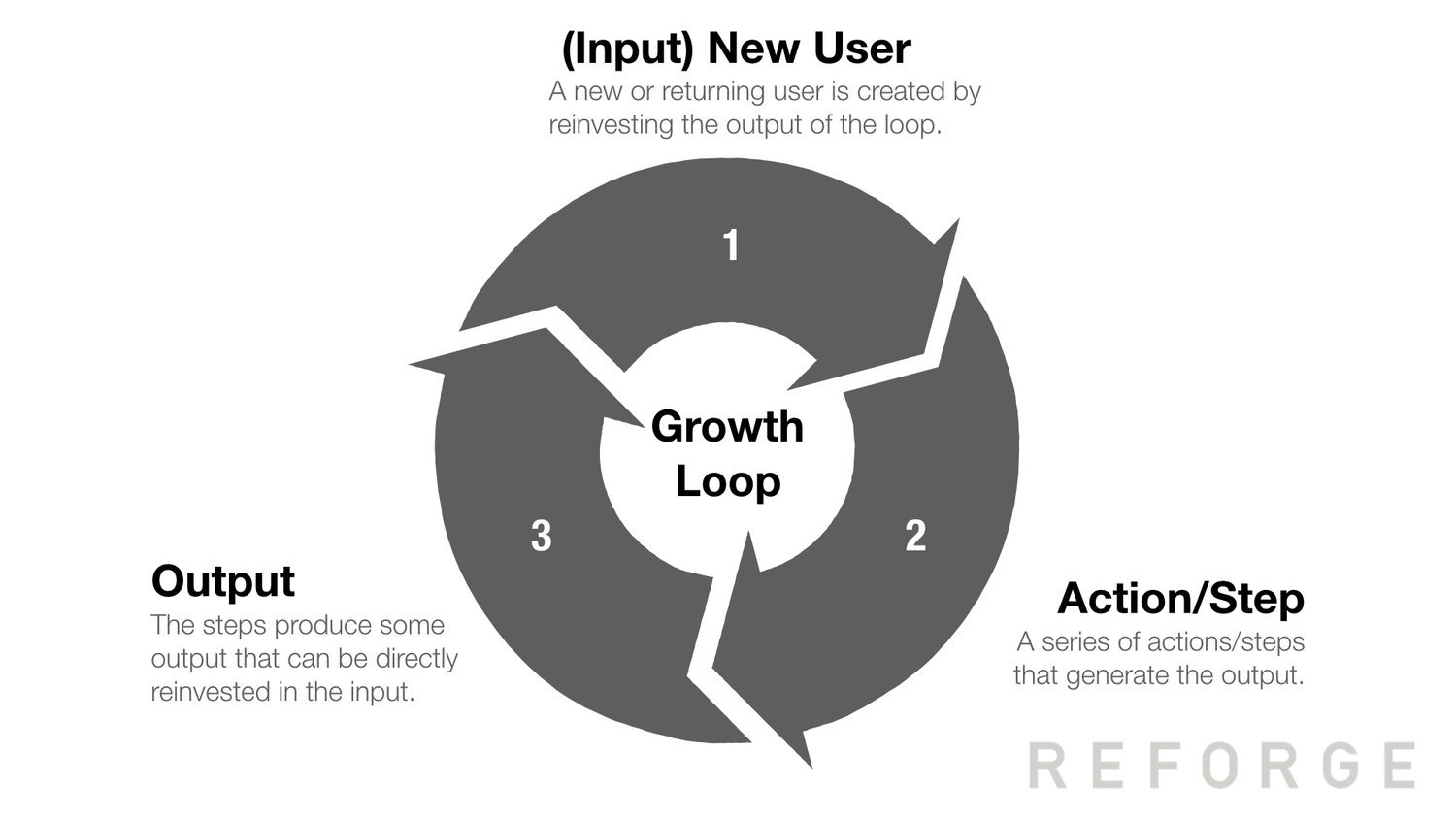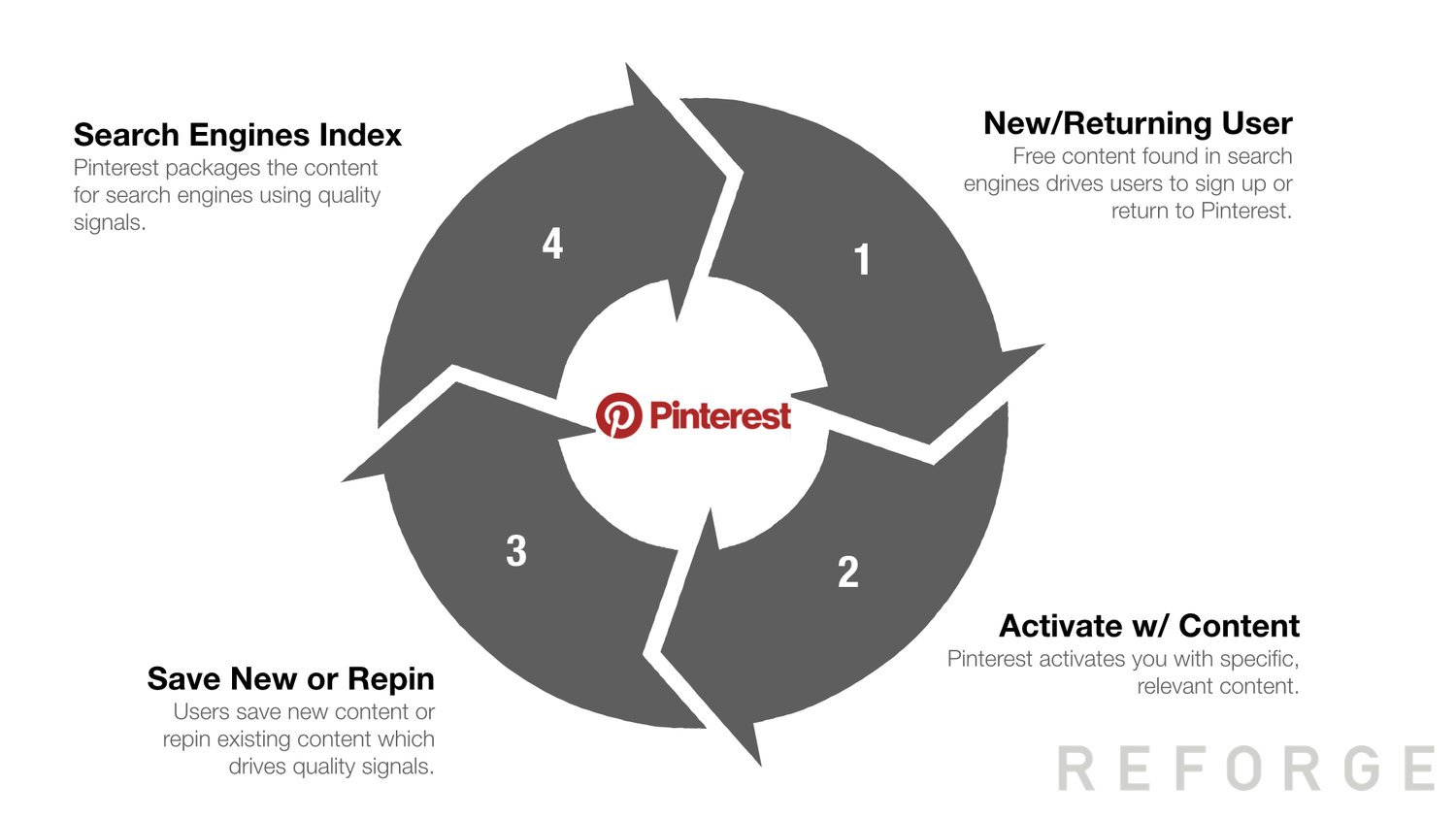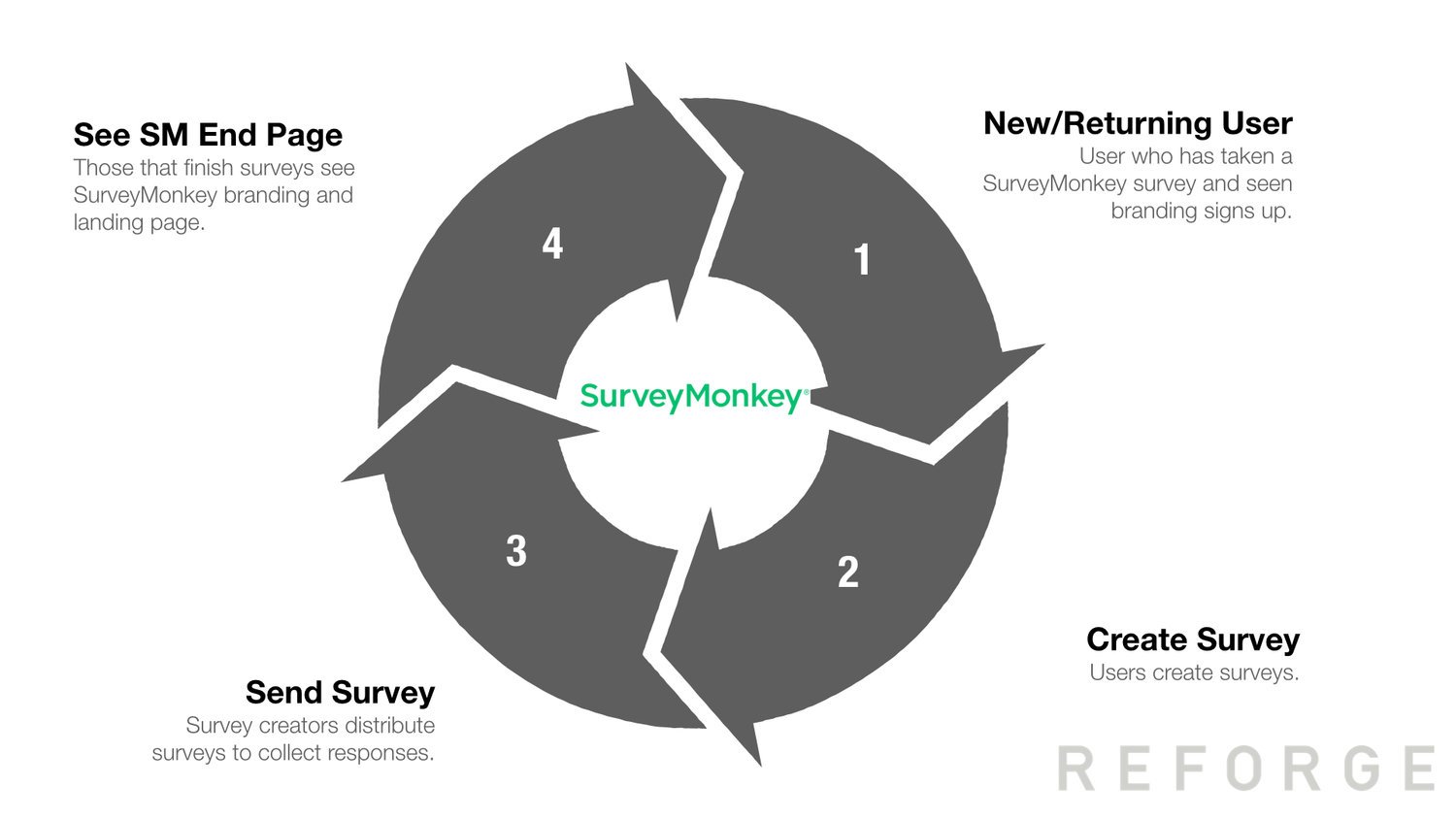The AARRR funnel framework has been the dominant guiding framework to metrics, goal setting, and strategic growth conversations. Funnels were a good starting point but do not accurately represent how the fastest growing products grow. It is time to move past the funnel framework and focus on growth loops.
This is the third post in a four post series. In the previous posts in the series we went through three important points. Growth wins, the game has changed, and to adapt we need a system of product, process, and team.
This system is just the beginning. We need new frameworks and tools to think about how products grow that incorporate these changes to growth and the lessons we've learned. In this post, we’ll cover:
P.S. This is the third post in a four-post series co-written by Brian Balfour, Casey Winters, Kevin Kwok, and Andrew Chen. To go deeper on these concepts, become a member and join an upcoming cohort - Growth Series, Retention + Engagement, or Advanced Growth Strategy.
Brian Balfour
Founder/CEO @ Reforge. Former VP Growth @ HubSpot.
Casey Winters
Growth Advisor, Former Pinterest, Grubhub.
Kevin Kwok
Former Greylock Ventures.
Andrew Chen Partner @ Andreesen Horowitz
The Most Important Question Your Team Should Be Able To Answer
One thing we ask participants in Reforge Programs is to go around their company and ask five different people to whiteboard the answer to a seemingly simple question: How does your product grow?
This seems like a simple question. But what everyone inevitably finds is one or more things:
Everyone has a different answer
The answer represents only one piece of the puzzle
The answer talks about the output of $$$, but not the inputs of usage
This is a BIG problem. If everyone has a different or incomplete picture of how the product grows, then you can't have apples-to-apples discussions about priorities, metrics, goals, or strategy. This leads to a few things:
People focused on different things
The teams moving in opposite directions
People not on the same page with CEO/exec team/others as to what is most important
“How does your product grow?” is simply the most important question to be able to answer. Growing is the entire reason why products and companies exist (especially in venture-backed startups). Companies that continually grow also provide the largest positive outcomes. More importantly, personally in your career if you drive growth at your company, you are rewarded vs others who do not drive growth.
So, what is the best way to answer this question?
Growth Funnels Are Not The Answer
One of the common answers to “How does your product grow?” is a picture of a funnel. The funnel AARRR framework was originally created by Dave McClure. It was a great starting point. It helped me and millions of others level up their game. But the framework is now > 11 years old and since then we've learned a lot about how the fastest software products grow.
The biggest thing we've learned is that the funnel framework is too micro of a view in order to answer “How does your product grow?” It helps explain a specific step within a Growth Loop, but misses the larger picture of the loop itself. When the funnel is applied at the company level and used to explain how a product grows, it leads to a few common issues:
Funnels Create Strategic Silos
When building a new product, the most common approach we see is to “build a great product” and then test a lot of different channels to see what works. This is exactly the wrong way to approach it. This treats product strategy and acquisition strategy in silos. In larger more developed products, you see this silo'd strategic planning as well. Typically the product team goes off and plans their product strategy and then marketing goes off and creates the acquisition strategy.
This silo'd strategic thinking is the cause for most distribution failures. Product Channel Fit tells us why. We commonly forget that we do not control the rules of the channels. The channels control the rules. As a result, we have to mold our product to fit the channels, not the other way around.
To make it worse, we also tend to treat our monetization strategy in a third silo. But, we know due to Channel Model Fit, our monetization model enables or disables certain channels.
Product, channels, and monetization need to be thought about together. They are interlinked. But the funnel framework leads a lot of teams to treat these as silo'd layers.
Funnels Create Functional Silos
It is common for companies to structure teams by layers of the funnel. Marketing owns acquisition. Product owns retention. Sales (if B2B) owns revenue. Then each one of those teams is given a metric that corresponds to that layer of the funnel.
The problem is that the teams then optimize at the expense of each other in order to reach their silo'd goal. Marketing brings in low quality users/leads at top of funnel to hit their goal, but that tanks retention or further down funnel metrics. All sorts of checks and balances get put in place over time to try and fix this which ends up complicating the understanding and goal setting of the metrics.
Funnels Operate In One Direction
Funnels operate in one direction. Put more in at the top, get more out at the bottom. There is no concept of how to reinvest what comes out at the bottom to get more at the top to continue to feed growth over time. In other words, no compounding effect. This means we have to keep putting more into the top to get more at the bottom. More money, more people, more tactics, more channels, more, more, more. This is unsustainable. Understanding the connection of how you reinvest to get more growth changes the way you think about where to focus and what to invest in (more on that below).
What is a framework that represents how the fastest companies grow? One that combines product, channels, and monetization into one system? One that looks for compounding growth vs linear growth?
Using Growth Loops Instead
"Compound interest is man's greatest invention." - Einstein
The fastest-growing products are better represented as a system of loops, not funnels. Loops are closed systems where the inputs through some process generates more of an output that can be reinvested in the input. There are growth loops that serve different value creation including new users, returning users, defensibility, or efficiency.
Here are a couple of examples:
The driving force behind Pinterest's growth is the following loop:
User signs up (or returns)
They activate you on the product with specific/relevant content
You save new content or repin existing content which gives Pinterest quality signals
Pinterest distributes the quality content to search engines
A user finds the content via search engines and either signs up/returns (see step 1)
These are two of over 20 growth loops we've identified in our research for the Advanced Growth Strategy program that drive acquisition, retention, defensibility, efficiency, or a combination. Those that understand them and organize their product/teams around them will be the ones who create the most value. There are two primary reason why Growth Loops are the key to the fastest-growing products.
Want to see more growth loops from companies like HubSpot, GoFundMe, and Stripe? Subscribe to our newsletter to unlock them in our free guide on growth loop characteristics.
Loops Provide Sustainable Compounding Growth
Loops force you to answer “How does one cohort of users lead to another cohort of users?” You focus on how you reinvest the output of one cycle of the loop into the next cycle of the loop to get more output. This creates a compounding effect that is more sustainable.
Not all loops are created equally. You'll be tempted to draw a ton of loops for your product, but what that typically means is that you just have a ton of low-powered loops that aren't sustainable. The fastest growing products are typically powered by 1- 2 major loops that transition over time. Measuring and understanding the power/health of your loops is critical to understanding where to focus.
Loops Are More Defensible
Loops combine how your product, channel, and monetization model work together in a single system rather than treating them as silos. As a result, they end up being more specific to your product and company making them harder for others to replicate.
On the other hand, strategies and tactics that aren't specific to your product/user/model by definition can be replicated with ease by others. As they get copied, effectiveness decreases and always trends to zero requiring you to constantly invent new strategies and tactics. This is not sustainable over the long term.
How Growth Loops Change Everything
Once you start looking at things through the loop framework, you start to make very different set of decisions.
You Approach Growth From A Different Perspective
Once you start viewing things through loops, you stop approaching acquisition, product, and monetization in silos. It forces you to think about how the three work together in a system. You stop thinking about the never ending cycles of more tactics, more channels, more of everything just to keep filling the top of the funnel, and you start thinking about how what you are producing can be reinvested.
You Make Investment Decisions Differently
If you had two options, which one would you choose?
Initiative A: Output of the initiative gives you 500 new engaged users this week, but nothing after.
Initiative B: Output of the initiative gives you 20 new users in week one, 22 in week 2, etc (growing 10% WoW) for every week going forward.
We really hope you choose Initiative B. This highlights how you make investment decisions differently. Rather than looking for the short term bumps and sugar rushes, loops help you start looking for the things that will compound over time producing much better results over the long term.
You Organize and Goal Teams Differently
In the second post in the series, we talked about the larger need for Cross Functional teams as product, data, engineering, and design play a larger role in outcomes like acquisition, retention, and monetization. Loops as you can see above traverse typical functional lines. To enable and improve them you typically need every function represented working towards the same goal, the output of the loop. This helps the teams align and organize around the loop rather than by function and reduces the teams optimizing at the expense of each other as it will be reflected in the output of the loop.
Putting Loops Into Action
Understanding loops, how to measure them, and how to map them to your product is just the first step. It is a phenomenal qualitative tool to change the way you think about growing a product. But it is hard to represent all the individual levers and their effect on your metrics. You need to translate your loops into a quantitative growth model to help communicate, prioritize, make strategic bets, set goals, and drive your metrics roadmap. We'll talk about this in the next (and final) post of the series. Subscribe here to make sure you don't miss it.
Go deep on Growth Loops + Models in the Advanced Growth Strategy program along with other experienced practitioners from Google, Facebook, Spotify, Adobe, HubSpot, and many more. We'll go through the properties that make a loop, detailed examples of 20+ growth loops, how to measure/analyze your loops, and how to build quantitative models.











